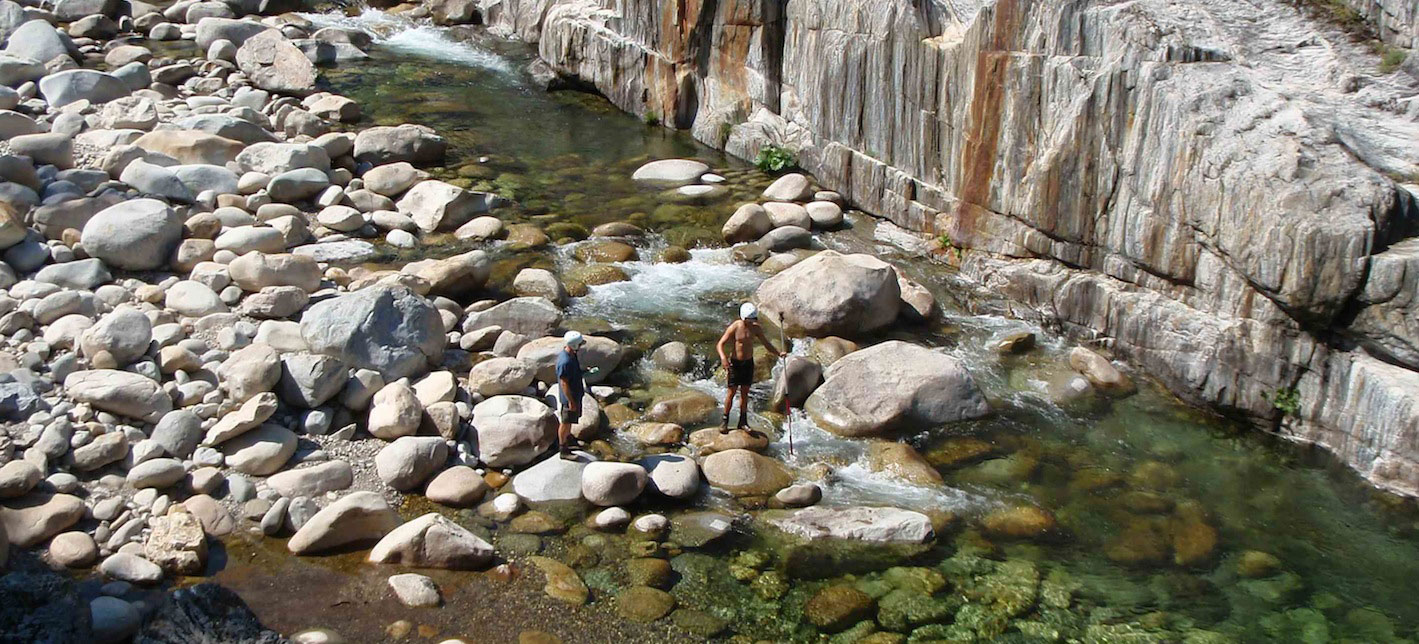Watershed Streamwood
Participants
Gregory B. Pasternack, Matthew C. Vaughan, Anne E. Senter, Helen Dahlke
Background
The hydrologic cycle, river hydraulics, and geomorphic controls are thought to be major drivers of dynamics and distribution of large streamwood (LSW). A long-standing conceptual model in the literature is that storage of LSW is generally higher in headwater streams, because they are transport limited, and lower in streams with high drainage area because they are supply limited. This pattern has also been characterized in terms of channel width, in that LSW storage is thought to decrease with increasing channel size within a physiographic system.
Purpose
The overall goal of this study was to test the hypothesis that LSW storage generally decreases in the downstream direction, and to investigate what other local and watershed-scale variables might control LSW storage. The overall goal of this study was to test the hypothesis that LSW storage generally decreases in the downstream direction, and to investigate what other local and watershed-scale variables might control LSW storage. The specific objectives were to (1) measure LSW storage at stratified-randomly selected field sites throughout the Yuba River watershed, (2) calculate a wide range of physics-based GIS landscape analysis variables in order to investigate watershed-scale controls, (3) use statistics to develop and categorically test additional hypotheses, and (4) determine whether a continuous multiple linear regression (MLR) model could be used to predict LSW storage based on measured variables.
Study Area
The Yuba River watershed is located in California, USA. This study considers the watershed that drains to Englebright Dam (39°14'23.91"N, 121°16'9.32"W; WGS1984 datum), which was completed in 1940 to store alluvial deposits from hydraulic mining operations higher in the watershed. Its 2,590 km long stream network drains an area of 2,874 km2 on the western slope of the Northern Sierra Nevada Mountain Range. The Yuba River is a tributary of the Feather River, which flows to the Sacramento River, and ultimately to the Pacific Ocean through the Sacramento – San Joaquin Delta
Methods
One hundred fourteen field sites of drainage area sizes ranging from < 1 km2 to > 1,000 km2 were visited, inventoried for LSW (length > 1 m, diameter > 10 cm), and the LSW volume of storage per channel length was calculated. Among many tested watershed-scale control variables, such as drainage area, stream order, and upslope stream distance, the local percentage of shrub cover and to a lesser extent bankfull channel width were the only significant predictors of total LSW volume per channel length in a multiple linear regression model, both with positive coefficients.
Results
Total LSW volume per channel length did not decrease in the downstream direction. Inclusion of floodplains in the study showed that higher percentages of LSW volume was found outside of bankfull-wetted channels in downstream reaches than in upstream reaches. A critical literature review was conducted to investigate the evidence for the common conceptual model of decreasing LSW storage in the downstream direction. The review revealed that (1) the use of LSW volume per channel area has confounded the commonly held conceptual model, due to its primal correlation with channel width, and (2) there is little evidence to support the hypothesis that headwater streams are transport limited, or that larger rivers are supply limited for LSW. A new conceptual model is offered alongside recommendations for future studies.
Publications
- Vaughan, M.C. 2014. Large streamwood storage does not decrease downstream through a watershed. MS Thesis, University of California at Davis.
- Senter, A.E., Pasternack, G.B., Vaughan, M.C., and Lehyan, J.S. 2015. Wood discharge is explained by stream discharge variations at multiple temporal scales in a Mediterranean-montane climate setting. Prepared for the U.S. Army Corps of Engineers, Sacramento District. University of California at Davis, Davis, CA.


